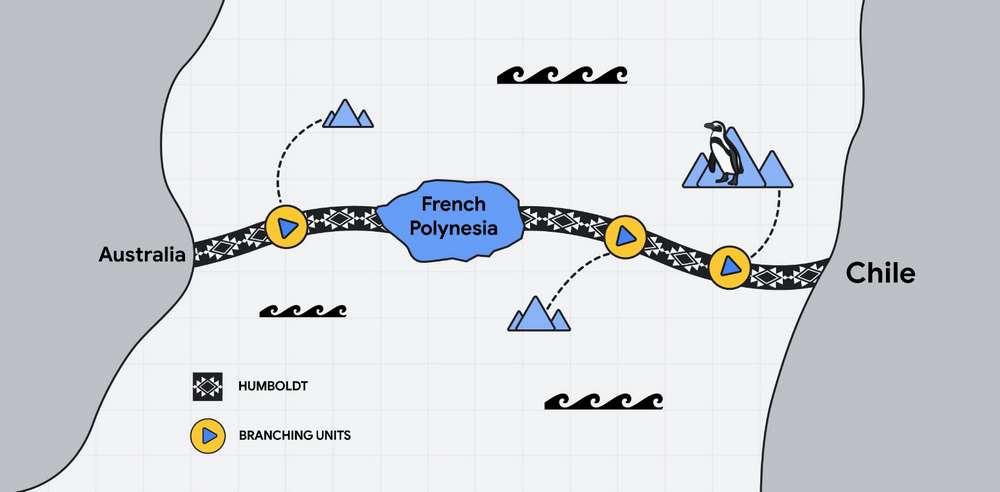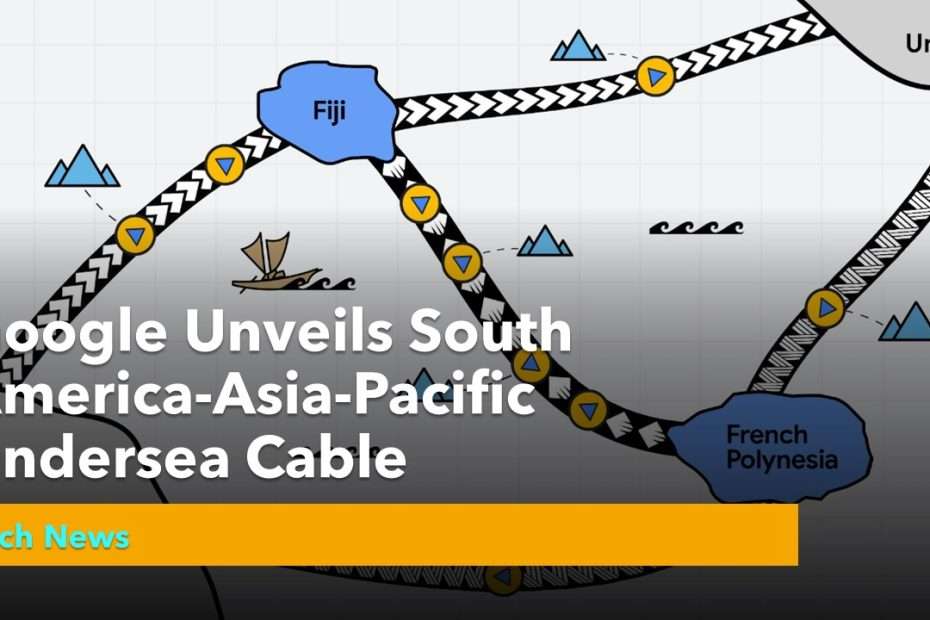Google has unveiled plans to enhance internet connectivity across the Pacific region by laying a new cable on the seabed of the Pacific Ocean. This ambitious project, costing $400 million, aims to significantly improve the reliability and resiliency of internet connections in the area. The endeavor is the outcome of a strategic collaboration involving Google, government organizations, and investment funds.
The decision to invest in this undersea cable reflects Google’s commitment to expanding and fortifying its global network infrastructure. By strategically partnering with government entities and investment funds, the tech giant demonstrates a collaborative approach to address the growing demand for robust and efficient internet connectivity in the Pacific region. The $400 million project is a testament to the scale and significance of the initiative.
Google has officially introduced the “Humboldt” project, marking a collaborative effort to establish a new undersea internet infrastructure. The Mountain View-based corporation is partnering with key entities, including the Chilean infrastructure fund Desarrollo País of Chile and the Office of Posts and Telecommunications of French Polynesia (OPT). This joint initiative aims to create a robust undersea cable connecting Australia and Chile, spanning an impressive 14,800 km across the Pacific Ocean seabed.
In a strategic move, Google is leveraging the expertise and resources of its partners to bring the Humboldt project to fruition. The collaboration with the Chilean infrastructure fund and the OPT signifies a multi-faceted approach to building a comprehensive and resilient undersea internet infrastructure. The involvement of various stakeholders highlights the significance of international cooperation in addressing the challenges and complexities of such a large-scale project.

Google has announced the Humboldt project, marking a significant milestone as the first direct cable route between South America and the Asia-Pacific region. This strategic move not only emphasizes Google’s commitment to Chile but also aligns with the company’s ongoing investments in digital infrastructure throughout the country and across Latin America. The Humboldt project is poised to integrate with existing initiatives, underscoring the tech giant’s dedication to strengthening its presence and influence in the region.
In tandem with Google’s commitment, the Chilean government has been actively pursuing the establishment of a direct fiber optic connection between South America and the Asia-Pacific region since 2016. The Humboldt project is set to play a pivotal role in this broader initiative, positioning Chile as the gateway to Latin America for data originating from the Asia-Pacific. This strategic positioning is expected to have far-reaching implications, enhancing Chile’s prominence in facilitating efficient data flow between the two regions. The collaborative efforts between Google and the Chilean government underscore a shared vision for advancing digital connectivity and reinforcing the country’s role as a key player in the global data exchange landscape.
The Humboldt project, as stated on its official page, is designed to offer several benefits to existing telecommunications networks. One of the primary advantages is the provision of “greater geographical diversity,” contributing to enhanced resilience and redundancy through the establishment of a new route. This strategic approach is crucial in bolstering the overall robustness of the telecommunications infrastructure, ensuring reliable connectivity even in the face of unforeseen disruptions.
Moreover, Humboldt aims to address the challenges posed by the escalating demand for internet capacity and reduced latency. The project acknowledges the “explosive” increase in traffic generated by emerging communication technologies such as 5G and the Internet of Things (IoT). By increasing internet capacity and improving latency, Humboldt is positioned to play a key role in efficiently managing this surge in data traffic. As a result, the project not only responds to the immediate needs of the evolving technological landscape but also anticipates and prepares for the future demands imposed by advancing communication technologies.
Google emphasizes the significant role that subsea cables play in fostering substantial economic growth. According to the tech giant, these cables contribute not only to the growth of gross domestic product (GDP) but also to job creation. The investment in subsea cables reflects Google’s recognition of the pivotal impact that enhanced digital connectivity can have on economic development.
In addition to economic benefits, Google highlights the positive outcomes for businesses and public organizations. Improved digital connectivity, facilitated by subsea cables, enables these entities to deliver and enjoy better digital experiences. This, in turn, can lead to increased efficiency, innovation, and collaboration in various sectors.
Moreover, Google underscores the personal benefits that individuals can derive from enhanced digital connectivity. The availability of robust subsea cables enables people to acquire skills and knowledge that are essential for exploring new career paths. This aligns with the broader societal impact of technological advancements, contributing to skill development and education in the digital age. Overall, Google’s emphasis on the multifaceted advantages of subsea cables underscores the importance of investing in and advancing global digital infrastructure for the benefit of both the economy and society at large.
Analysys Mason estimates that Google’s previous deployment of undersea cables in Latin America and the Caribbean region (LAC) is projected to contribute significantly to the cumulative increase in GDP, amounting to $178 billion between 2017 and 2027. Additionally, the deployment is anticipated to result in the creation of around 740,000 new jobs by the year 2027. This underscores the economic impact and job creation potential associated with Google’s investments in undersea cable infrastructure, reinforcing the company’s role as a key player in advancing regional development.
Patricio Rey Sommer, the General Manager of Desarrollo País, expresses the significance of Google’s public announcement regarding the Humboldt project, marking a crucial milestone in its history. After years of behind-the-scenes work, Humboldt is now transitioning into its “materialization phase,” with the cable expected to be completed by 2026. The collaboration with the US State Department, which is contributing a $15 million investment to the project, highlights the Humboldt cable as a tangible example of “greater economic cooperation” in the Americas. The choice of the name “Humboldt,” selected through a naming contest on Chilean social media, pays homage to the German explorer Alexander von Humboldt, known for his extensive travels in the Americas during the early 19th century.
Maybe you liked other interesting articles?

